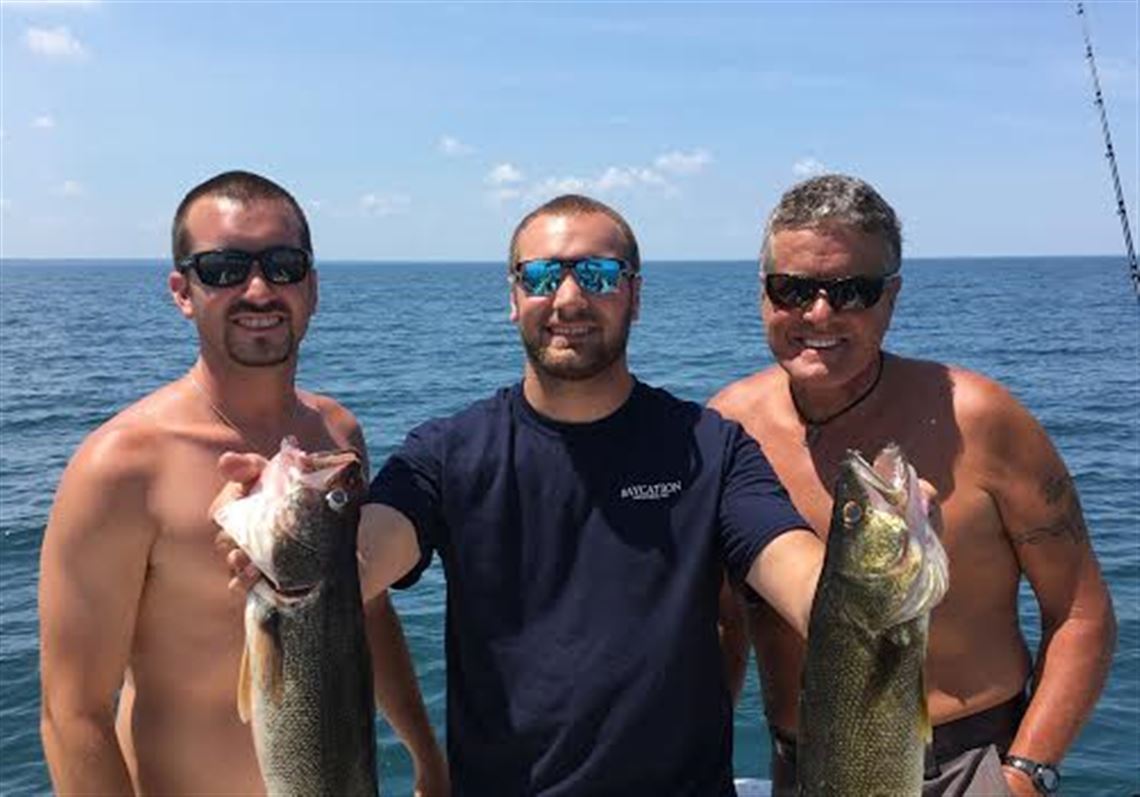At night, big muskellunge from Loyalhanna Reservoir follow the serpentine Loyalhanna Creek as far upstream as the Route 30 westbound bridge, and in 2015 nearly 200,000 recreational users visited Loyalhanna Lake.
The U.S. Army Corps of Engineers Pittsburgh District celebrated the 75th anniversary of Loyalhanna Dam on Saturday with public tours, information booths, historical displays, children’s activities and music from the 1940s.
One of 16 federally funded flood control projects started in the Pittsburgh area in the late 1930s, Loyalhanna Dam has provided an estimated $530 million in flood damage reduction to downstream communities, according the the Army Corps. Draining 290 square miles in Westmoreland County, the lake has hosted more than 4.5 million anglers, boaters, campers and picnickers since the completion of Bush Recreation Area in 1951. Nearly 3,000 acres of project lands are leased to the Pennsylvania Game Commission for wildlife management and public hunting.
Following a 1999 Fish and Boat biologist report that found high concentrations of gizzard shad, increased numbers of fingerling muskies, tiger muskies and channel catfish were stocked. A 2005 report, organized to monitor the rate of growth of muskies and tiger muskies, found significantly fewer of the predators than during the previous survey with the biggest muskellunge measuring 46 inches 29 pounds and the largest tiger 39 inches 14 pounds. A Fish and Boat analyst suggested that fluctuating water levels during the 2005 survey may have impacted the survey catch.
Since then Loyalhanna Lake anglers have released good numbers of legal muskies and tiger muskies, and reported catches of largemouths; brown, yellow, white and channel catfish; yellow perch, black and white crappies, pumpkinseed and bluegill, the lake’s most common game fish.
Follow the science
When John Arway took over at the state Fish and Boat Commission in 2010, he promised himself he’d never become a “politician.”
But recently in a peer-reviewed journal focused on Pennsylvania public policy, Arway wrote that shortly into his tenure he realized that “politics” isn’t necessarily a dirty word. In fact, it could be the vehicle driven to convince “technocrats, bureaucrats and politicians on both sides of the aisle” to conserve and enhance the best parts of Pennsylvania’s waterways and aquatic wildlife.
The paper, titled “The Politics of Science or the Science of Politics,” was published in the current edition of Commonwealth: A Journal of Pennsylvania Politics and Policy. Arway wrote that he uses the science he relied upon during 30 years as a fisheries biologist to make his political push for conservation.
“Use of the scientific method is the bond that unifies scientists in all professions,” he wrote. “It is often ironic to hear non- scientists say, ‘We will follow the science’ as they discuss public policy decisions when, more often than not, it is not the science that prevails in public policy or political debates. Frequently, political, social and economic variables dominate the discussion while science takes a backseat in decision making. However, can the scientific method also be used in political science?”
The paper was published in a special edition of Commonwealth focused on energy and the environment.
Safety first
Last year was one of the safest on record for Pennsylvania hunters.
According to the state Game Commission, 25 hunting-related shooting incidents occurred in 2016 -- the second lowest recorded -- and no fatalities occurred related to gun handling while hunting or trapping.
Only one other year, 2012, ended with no hunting-related fatalities.
Decades ago, before hunter-trapper education courses and the development of a culture of hunting safety, hundreds of incidents occurred every year in Pennsylvania.
First Published: June 25, 2017, 4:00 a.m.


















